Rose-Marie

Brief Synopsis
Cast & Crew
W. S. Van Dyke
Jeanette Macdonald
Nelson Eddy
Reginald Owen
Allan Jones
James Stewart
Film Details
Technical Specs

Synopsis
In Montreal, Canada, opera star Marie de Flor gives a masterful performance of Gounod's opera Romeo et Juliette . Following the show, Marie tells her maid, Anna Roderick, that she is not in need of romance because she has her work, fame and money. She concedes, however, that the only man she ever truly loved is her brother, John Flower, who is serving a jail sentence for participating in a holdup. Upset by the recent news of her brother's parole rejection, Marie decides to seek a pardon for him by courting the favor of the visiting premier of Quebec. As Marie is about to request the premier's help, however, she is visited by Boniface, a mysterious Indian half-breed, who informs her that John has escaped from prison, killed a Mountie in a fight and is now a wounded fugitive in need of her financial help. Marie decides to follow Boniface to his mother's home in the woods, where John is hiding, and they leave immediately. While Marie and Boniface begin their journey north, Sargeant Bruce, a Royal Canadian Mounted Police officer, receives an assignment to find John, who is believed to be hiding near Lake Shibuga. Bruce is given a description of the fugitive and is told that the man has no known relatives. When Boniface and Marie arrive at the nearest outpost to Lake Shibuga, Boniface robs Marie of her money and deserts her. After an unsuccessful search for Boniface, the penniless Marie tries to earn money by singing at a local saloon. The opera singer, however, is soon humiliated by the patrons of the saloon and forced to turn her song over to Belle, the tavern favorite. Following her brief saloon stint, Marie is approached by Bruce, who compliments her singing. Though Marie tells Bruce that her name is Rose-Marie, Bruce pretends not to know her real identity while questioning her about her stolen purse. Eventually, though, Bruce admits that he knows who she is and that he recognized her immediately. Marie tries to keep Bruce out of her affairs, but Bruce insists on escorting her to an Indian camp, where he believes that the man who stole her purse is likely to be found. While crossing a moonlit lake on their way to the Indian camp, Bruce, who has fallen in love with Marie, tries to woo her with a sweet serenade. Marie finds Boniface at the Indian camp and threatens to turn him over to the police if he does not resume his job as her guide. Later that night, after serenading Marie once again, Bruce connects Marie's last name, the Spanish word for "flower," with that of the escaped convict. He rushes back to her room, but discovers that she has fled. Bruce then follows Marie's trail, keeping a safe distance once he finds her, until she falls into a lake and begins to drown. While Bruce saves Marie, Boniface slips out of Marie's sight for the second time. Marie and Bruce camp for the night by the lake, where he explains the legend behind the Indian love calls they hear in the distance. They then compose their own Indian love call and end it with a kiss to seal their love. On their last night together, Marie suggests to Bruce that he quit his job as a mountie and begin a singing career, but Bruce insists that his place is in the woods. Before they go their separate ways, Bruce promises Marie that he will always respond to her love call. Although she is not aware of it, Marie is followed by Bruce after they bid each other farewell. Marie is soon reunited with Boniface, who takes her to her brother. John is glad to see Marie, but appears to be overly eager to spend her money to go China. The happy reunion is soon disrupted when Bruce arrives and arrests John. The sobbing Marie begs Bruce not to take him away, and despite her attempt to stop him by singing their "love call," he remains loyal to his oath and takes John away. Time passes, and Marie resumes her singing engagements and performs in the Giacomo Puccini opera Tosca . The play proves too much for her, though, and she collapses on stage in the final act. Six months later, while recuperating at a mountain cabin, Marie sadly sings the "Indian Love Call." When she reaches the refrain of the song, Bruce enters from the foyer, where he has been listening, and sings with her. The reunited lovers finish their song and kiss.

Director
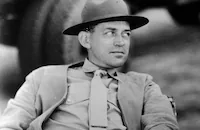
W. S. Van Dyke
Cast

Jeanette Macdonald

Nelson Eddy
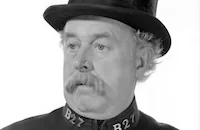
Reginald Owen

Allan Jones
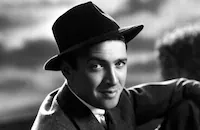
James Stewart
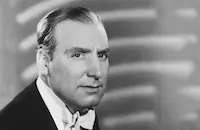
Alan Mowbray
Gilda Gray
George Rigas
Robert Greig

Una O'connor

Lucien Littlefield

David Niven
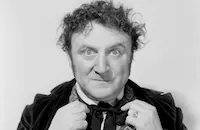
Herman Bing
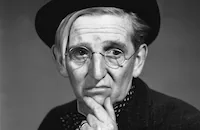
James Conlin
Dorothy Gray
Mary Anita Loos
Aileen Carlyle

Halliwell Hobbes
Paul Porcasi
Edgar Dearing
Pat West
Milton Owen
David Clyde
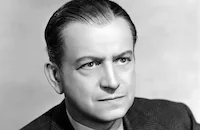
Russell Hicks
William Stack
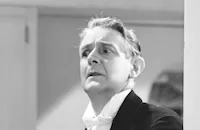
Leonard Carey
David Robel
Joseph Chorrie
Bill Cody
Iron Eyes Cody
Rinaldo Alacorn
Bert Lindley
Rolfe Sedan
Louis Mercier
Matty Roubert
Agostino Borgato
Olga Dane
Jack Pennick
James Murray
Crew
Adrian
Harry Akst
Jules Barbier
William Brennan
Shelton Brooks
Michel Carré
Rudolf Friml
Rudolph Friml
Giuseppe Giacosa
Cedric Gibbons
Frances Goodrich
Charles Gounod
Albert Hackett
Chester Hale
Oscar Hammerstein Ii
Otto Harbach
Luigi Illica
Gus Kahn
Gus Kahn
Paul Lamkoff
Sam Lewis
Alice Duer Miller
Joseph Newman
Giacomo Puccini
Michael Val Roset
Blanche Sewell
Douglas Shearer
Herbert Stothart
Herbert Stothart
Herbert Stothart
Hunt Stromberg
William Von Wymetal
Edwin B. Willis
Joseph Wright
Joe Young

Videos
Movie Clip





Trailer
Hosted Intro
Film Details
Technical Specs

Articles
Rose Marie (1936)
By the time they made Naughty Marietta, MacDonald was already a big star. Eddy had a successful concert career, but hadn't made many films. MGM next planned to co-star Eddy in Rose-Marie with opera star Grace Moore, who still owed MGM a film. But Moore balked at co-starring with someone she considered an "unknown." In the meantime, Naughty Marietta was turning out to be a huge hit, so the studio was happy to replace Moore with MacDonald, and assigned W.S. Van Dyke, who helmed Naughty Marietta, to direct Rose-Marie.
Van Dyke was a speedy, economical director, who nevertheless could be counted on to deliver a classy and well-acted product. The studio made a decision that was revolutionary for the time: they would shoot the outdoor scenes on location, with the Lake Tahoe area of northern California standing in for Canada. Rose-Marie was one of the first musicals to use a naturalistic setting. A special train of seventeen box cars carted the equipment to the location. Movie crews built several 40-foot totem poles in state parkland at Emerald Bay for the Indian totem pole dance. With a cast of almost a thousand people (cast, extras and crew), feeding everyone was a problem, and the cuisine was less-than-gourmet box lunches. One day, for a treat, the crew set up a table for Van Dyke with a hot meal. The director asked if it was the same food that the crew was getting, and when he found out that it wasn't, he refused the meal and stood in line for box lunches like everyone else. The director was a dedicated prankster, and one of his more elaborate jokes involved rigging a fake explosion, for which the film's vocal coach believed himself responsible. Another time, while filming a scene in which MacDonald falls into a river, he sent the crew to lunch and left the star sitting in the water.
Rose-Marie was an important film in the careers of several newcomers. Cast as MacDonald's brother on the lam was James Stewart, in his third film. Van Dyke had noticed Stewart in his previous bit parts, and asked for him to play John Flower. This was the film that really started Stewart's career, and he always gave credit to Van Dyke for the boost. Also a standout in Rose-Marie was Allan Jones, the tenor who shares operatic arias with MacDonald in the film. He was newly-arrived at MGM, and had only been featured in musical sequences in films. Eddy, who had recently been in the same position as Jones, felt threatened by the other singer, and demanded that Jones' scenes be trimmed. But the following year, Jones would get his chance, when he co-starred with MacDonald in The Firefly (1937). Less auspicious was the part played in Rose-Marie by another newcomer, David Niven, cast as one of MacDonald's suitors. He receives a screen credit as "David Nivens," but in his autobiography Niven claims that in the finished film, his bit part had been reshot with another actor.
Rose-Marie was even bigger at the box office than Naughty Marietta. Jeanette MacDonald and Nelson Eddy would make a total of eight films together, and sang 37 duets in them. But of all those films and all those romantic melodies, the one that is considered the quintessential MacDonald-Eddy number, for better or worse, is Indian Love Call.
,B> Producer: Hunt Stromberg
Director: W.S. Van Dyke
Screenplay: Frances Goodrich, Albert Hackett, Alice Duer Miller, based on the operetta by Otto A. Harbach, Oscar Hammerstein II, Rudolf Friml, Herbert Stothart
Art Direction: Cedric Gibbons, Joseph C. Wright, Edwin B. Willis
Cinematography: William H. Daniels
Costume Design: Adrian
Editor: Blanche Sewell
Music: Rudolf Friml, Herbert Stothart, lyrics by Otto A. Harbach, Oscar Hammerstein II, Gus Kahn
Cast: Jeanette MacDonald (Marie de Flor), Nelson Eddy (Sgt. Bruce), James Stewart (John Flower), Reginald Owen (Myerson), George Regas (Boniface), Robert Greig (Cafe Manager), Una O'Connor (Anna), Allan Jones (Tenor), Gilda Gray (Bella), David Nivens (Teddy).
BW-111m. Closed captioning.
by Margarita Landazuri

Rose Marie (1936)
Quotes
Trivia
According to Louis B. Mayer biographer Charles Higham, Nelson Eddy was reportedly was so jealous and insecure of potential competition from tenor Allan Jones that he asked that Jones' footage in the film be reduced; the studio agreed and cut what would have been Jones' only solo number in the film, the famous aria "E lucevan le stelle" , from Puccini's "Tosca".
Notes
Producer Hunt Stromberg, according to an AMPAS inter-office memo dated November 5, 1935, proposed that the writing credits for the film appear as follows: "Screen Play by Frances Goodrich and Albert Hackett. From an original screen story by Alice Duer Miller, based on the play Rose Marie." The memo goes on to state that the Academy thought that "any such credit would make the studio look ridiculous and would be confusing." A June 1935 Hollywood Reporter news item announced that Grace Moore was originally set to star opposite Nelson Eddy. Also according to Hollywood Reporter, this film was to be Eddy's last picture before the start of his four month concert tour, which began in Long Beach, CA, on January 2, 1936. The same news item also listed Marcella Burke and Ross B. Willis as the adaptors. Actor David Niven was billed in the film as David Nivens, a variation on the spelling of his name that was used in some of his early films. Hollywood Reporter production charts list actors Duke York, Julie Laird, Linda Parker, James Young, Tony Beard, Alesandro Giglio, Gennaro Maria-Curci and Doris Atkinson in the cast; and Hollywood Reporter pre-production news items list actors William Steele, Margaret Zitt and Edith Holloway in the cast, but their appearance in the released film has not been confirmed.
According to the Motion Picture Herald review, word of a preview screening of Rose-Marie at the Westwood Village Theatre in Los Angeles spread so quickly that crowds of people blocks long packed the theatre to capacity two hours before the showing. A Hollywood Reporter news item notes that, as an exploitation stunt for the film, the studio offered a $2,000 reward to the first woman in 1936 to name her newborn twin daughters "Rose" and "Marie." The prize was awarded to Mrs. Esker R. Owens of Fort Smith, AR.
The M-G-M Campaign Book for Rose-Marie notes that the filming of the "Totem Pole Dance" sequence was filmed at Lake Tahoe in six weeks and featured over seven hundred Indians from fifty different tribes. Although contemporary sources confirm that the outdoor scenes were filmed at Lake Tahoe, CA, a 1985 Los Angeles Times news article claimed that the filming took place at Lake Arrowhead, CA., where Warner Bros. filmed River's End in 1930. The article noted that the Lake Arrowhead property, on which the famous "Totem Pole Dance" sequence was allegedly filmed, was put up for sale by the Moreland Development Co. The lakeshore property was reportedly subdivided into nineteen lots and sold at prices ranging from $225,000 to $500,000 apiece. The article also noted that some of the totem poles used in the film still remained on the site. A follow-up article in the Los Angeles Times, however, disproves the Moreland Development Co.'s claim that the film was shot at Lake Arrowhead: Assistant director Joseph M. Newman told the newspaper that "not one frame was shot at Lake Arrowhead. The entire picture was made at Lake Tahoe...The totem pole was constructed at Emerald Bay at Tahoe...We never even considered Arrowhead." Newman's account was confirmed by James Stewart. In addition, an October 1935 Daily Variety news item indicates that the "hundreds" of totem poles that were used on the Lake Tahoe set were later donated to the state park bordering the lake.
Modern sources list Slavko Vorkapich as the montagist, and list the following actors in the cast: Major Sam Harris (Guest); Ernie Alexander (Elevator operator); James Mason (Trapper); John George and Lee Phelps (Barflies); Fred Graham (Corporal); Adrian Rosley (Opera fan); and J. Delos Jewkes (Butcher at hotel). Actor James Murray, who starred in the 1928 silent film The Crowd, drowned in the Hudson River in July 1936; this May have been his last film.
Two other films based on the same source were the 1928 M-G-M film Rose-Marie, directed by Lucien Hubbard and starring Joan Crawford and James Murray (see AFI Catalog of Feature Films, 1921-30; F2.4701), and the 1954 M-G-M film Rose Marie (title not hyphenated), directed by Mervyn LeRoy and starring Ann Blyth and Howard Keel. According to modern sources, instead of retitling its 1954 remake of this film, M-G-M decided to keep it as Rose-Marie and change the title of the 1936 film to Indian Love Call in order to distinguish its new version.
















